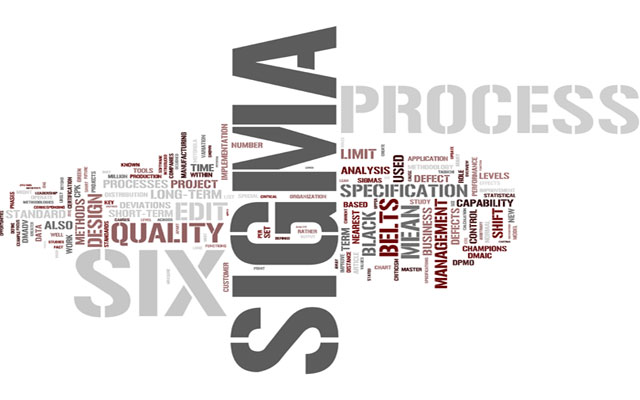Online Class: Effective Communication Skills

no certificate
with CEU Certificate*
-
12Lessons
-
14Exams &
Assignments -
6,254Students
have taken this course -
7Hours
average time -
0.7CEUs
Course Description
Mastering the Art of Communication: A Pathway to Personal and Professional Efficacy
In every corner of human interaction, communication holds the reins. The casual banter with a café barista, the engaging pitch in a conference room, or the heartfelt conversation with a loved one - each of these encounters underscore the pivotal role of communication. It not only mirrors your personality but also carves the depth and quality of relationships you build with the world around you.
In an age of globalization and digital connectivity, communication has expanded beyond the simple exchange of words. While verbal interactions remain integral, non-verbal cues, written correspondences, and technology-mediated communication hold equal gravitas. Despite this vastness, certain foundational principles of effective communication remain universal. A mastery of these, combined with skills like conflict resolution and negotiation, paves the way for enriched personal and professional connections.
For professionals navigating the corporate world, individuals yearning to enhance personal bonds, or anyone striving for clarity and confidence in their interactions, mastering communication is the key. It's the bridge that not only prevents misunderstandings but also propels you towards unparalleled success.
Course Outline:
-
Lesson 1: Recognizing and Understanding Communication Styles
- Explore the diverse styles of communication and introspect to identify your own. Recognize the strengths and limitations of each style and how to adapt for effective interactions.
-
Lesson 2: Verbal Communication
- Dive into the nuances of spoken words. Learn the power of tone, pitch, and clarity, and how they can influence perceptions and outcomes.
-
Lesson 3: Nonverbal Communication
- Decode the silent language of body posture, facial expressions, and gestures. Understand their profound impact on complementing or contradicting verbal cues.
-
Lesson 4: Communicating in Writing
- Harness the potency of the written word, from crafting compelling emails to persuasive proposals. Explore the role of clarity, coherence, and conciseness in written communication.
-
Lesson 5: Cultivating Conversational Skills
- Strengthen your conversational prowess. Learn to initiate, sustain, and conclude interactions in a manner that fosters mutual respect and understanding.
-
Lesson 6: Group Communication
- Navigate the dynamics of group interactions, from small team meetings to large panel discussions. Understand group roles, consensus building, and effective facilitation techniques.
-
Lesson 7: Communications Technology
- Delve into the digital realm of communication. From video conferencing tools to social media platforms, explore how technology has transformed the way we connect.
-
Lesson 8: Barriers to Communication
- Identify obstacles that impede effective communication, such as biases, distractions, or environmental factors. Learn strategies to overcome these barriers for fluid conversations.
-
Lesson 9: Cultural Aspects of Communication
- Appreciate the rich tapestry of cultural nuances and etiquettes. Discover how cultural sensitivity can enhance cross-cultural interactions and foster inclusivity.
-
Lesson 10: Disagreements and Conflicts
- Equip yourself with tools to navigate disagreements. Understand the roots of conflicts and strategies to address and resolve them constructively.
-
Lesson 11: Negotiation
- Unravel the art of negotiation. Learn techniques to achieve mutually beneficial outcomes without compromising on core values or objectives.
-
Lesson 12: Constructive Criticism
- Embrace feedback as a growth tool. Discover how to give and receive criticism in a manner that fosters improvement and maintains dignity.
This transformative course promises not just a theoretical understanding but a practical toolkit to elevate your communication acumen. By the end, you'll be equipped to articulate with clarity, empathize genuinely, and interact confidently in diverse settings. Join us in this enlightening journey to become an adept communicator.
Course Motivation
What is Communication?
Communication is more than just the act of talking. For true communication to happen, ideas have to be shared and understood among people. While talking is certainly one of the most obvious methods we use to relate thoughts and ideas to one another, it is not the only form of communication we use regularly. Have you ever had an entire conversation without even speaking a word? A glance here. A head nod there. Maybe a couple of gestures. Without even opening your mouth, you can communicate entire thoughts to other people.
There are a number of ways to define communication styles. It seems that every self-help or public speaking book has yet another way to categorize the ways people prefer to communicate. The labels placed on the various communication styles are much less important than taking the time to simply consider what your own style might be. The more you know about the various styles of communication, the more effective you can be, not just in making your own points, but also in understanding what others are trying to communicate to you.
One common method for determining communication styles is to break them down into the following categories: Passive, Aggressive, Passive-Aggressive, and Assertive.
Passive Communication
Those who use a passive style of communication often keep their own feelings hidden from others. The goal with this type of communication is to avoid conflict. Rather than risk causing some sort of upset, the Passive Communicator will avoid expressing his or her own opinions and will accept those of others instead.

If the Passive Communicator does choose to express an opinion, it will usually be done very quietly, and he or she is unlikely to defend it very strongly. In addition to a quiet tone of voice, passive communication can be recognized by the way in which the individual avoids eye contact. Because the Passive Communicator is so concerned about avoiding conflict, he or she is constantly holding back personal opinions in favor of those of others. This is the person who doesn't want to "rock the boat."
The Passive Communicator will often say things like:
- I don't know.
- You decide.
- It doesn't matter to me.
- Whatever you think.
This inability to stand up for oneself has some major disadvantages, though. Unfortunately, someone who always engages in passive communication may eventually "blow up" from the pressure of always deferring to other people's ideas and opinions.
The Passive Communicator tends to get very little accomplished. He or she doesn't offer ideas on how to do things better or more efficiently, for example. In an effort not to be singled out, he or she is unlikely to do an exceptional job in the workplace.
Aggressive Communication
Aggressive communication has a lot to do with trying to protect one's own ideas and opinions. The Aggressive Communicator is so concerned with having his or her ideas accepted that they often do so at the expense of others. This person tends to look at every situation as if it is a battle, and he or she wants to win.
This type of communication generally includes the use of a loud voice. In fact, Aggressive Communicators may often appear to be quite angry. This is because they know that others are less likely to question them out of fear of being attacked. Eye contact is often used in a way that makes it intimidating. The words used may also be quite intimidating, and an Aggressive Communicator can go so far as to verbally abuse others.
The Aggressive Communicator will often say things like:
- We do it my way, or we don't do it at all.
- Your idea is stupid.
- Feelings don't matter.
- I know what's best.
The Aggressive Communicator will use manipulation to get his or her way. This might include attempting to make others feel guilty, or trying to control their actions. These people will often go so far as to use covert tactics to be sure that things are done their way. While these methods may work on the surface, they do little to foster any real relationships. While the Aggressive Communicator may be getting a point across, he or she is likely not hearing and accepting the ideas of others. This leads to a lack of respect and trust from friends, family, co-workers, and customers.
Passive-Aggressive Communication
While passive communication and aggressive communication are very different from one another, they can actually be combined to create a third communication style. Passive-Aggressive Communicators tend to avoid obvious conflict, but there is still a need to manipulate the situation. In many cases, there is some sort of "payback" given in return for having their opinions overlooked. The individual appears to go along with decisions but does so in order to get revenge later.

Some of the common tactics of the Passive-Aggressive Communicator are to agree with others to their faces and then belittle them behind their backs. Sarcasm is one of the biggest tools for this type of interaction. Passive-Aggressive Communicators may enjoy watching others fail because things were not done their way in the first place. Back-handed compliments are another tactic employed.
The Passive-Aggressive Communicator will often say things like:
- That's fine with me, but don't be surprised if someone else gets mad.
- You did a great job. No one will probably notice that mistake.
- Sure we can do things your way. (Then mutters to self that "your way" is stupid.)
Passive-aggressive communication has a lot to do with sabotage. The individual may feel powerless and therefore finds ways to subtly manipulate the situation. Passive-Aggressive Communicators don't feel like they can directly confront the cause of their frustration, so they do their best to "get back at" it. This can extend to gossiping and finding ways to disrupt others.
Assertive Communication
The most effective communication style is assertive communication. This includes really sharing opinions, as well as advocating for one's own rights. Unlike the Aggressive Communicator, though, this person will not trample on the rights and opinions of others. Assertive Communicators are able to balance a respect for themselves, with a respect for others.

The Assertive Communicator will often say things like:
- I hear what you're saying.
- I would appreciate it if you would...
- How can we work this out?
Assertive communication is also the best choice, because it avoids a lot of the emotional outbursts that are prevalent with the other types of communication. It is easier to solve problems when they do arise. It can be difficult to stay on track, however, especially when dealing with different types of communicators. It is important to avoid getting defensive, and to try to remain as objective as possible. It is possible that someone else's idea really is better than yours. On the other hand, it's possible that you have the best idea in the room, and the Assertive Communicator will advocate for it.
- Completely Online
- Self-Paced
- Printable Lessons
- Full HD Video

- 6 Months to Complete
- 24/7 Availability
- Start Anytime
- PC & Mac Compatible
- Android & iOS Friendly
- Accredited CEUs

Course Lessons
Lesson 1: Recognizing and Understanding Communication Styles
 Lesson 1 Video
Lesson 1 Video Lesson discussions: Reasons for Taking this Course
Lesson discussions: Reasons for Taking this Course Complete Assignment: An Introduction
Complete Assignment: An Introduction Assessment: Lesson 1 Exam: Recognizing and Understanding Communication Styles
Assessment: Lesson 1 Exam: Recognizing and Understanding Communication Styles
Lesson 2: Verbal Communication
 Lesson 2 Video
Lesson 2 Video Assessment: Lesson 2 Exam: Verbal Communication
Assessment: Lesson 2 Exam: Verbal Communication
Lesson 3: Nonverbal Communication
 Lesson 3 Video
Lesson 3 Video Assessment: Lesson 3 Exam: Nonverbal Communication
Assessment: Lesson 3 Exam: Nonverbal Communication
Lesson 4: Communicating in Writing
 Lesson 4 Video
Lesson 4 Video Assessment: Lesson 4 Exam: Communicating in Writing
Assessment: Lesson 4 Exam: Communicating in Writing
Lesson 5: Cultivating Conversational Skills
 Lesson 5 Video
Lesson 5 Video Assessment: Lesson 5 Exam: Cultivating Conversational Skills
Assessment: Lesson 5 Exam: Cultivating Conversational Skills
Lesson 6: Group Communication
 Lesson 6 Video
Lesson 6 Video Lesson discussions: We can increase the power of communication by various methods.
Lesson discussions: We can increase the power of communication by various methods. Assessment: Lesson 6 Exam: Group Communication
Assessment: Lesson 6 Exam: Group Communication
Lesson 7: Communications Technology
 Lesson 7 Video
Lesson 7 Video Assessment: Lesson 7 Exam: Communications Technology
Assessment: Lesson 7 Exam: Communications Technology
Lesson 8: Barriers to Communication
 Lesson 8 Video
Lesson 8 Video Lesson discussions: You can overcome the barriers of communication
Lesson discussions: You can overcome the barriers of communication Assessment: Lesson 8 Exam: Barriers to Communication
Assessment: Lesson 8 Exam: Barriers to Communication
Lesson 9: Cultural Aspects of Communication
 Lesson 9 Video
Lesson 9 Video Assessment: Lesson 9 Exam: Cultural Aspects of Communication
Assessment: Lesson 9 Exam: Cultural Aspects of Communication
Lesson 10: Disagreements and Conflicts
 Lesson 10 Video
Lesson 10 Video Assessment: Lesson 10 Exam: Disagreements and Conflicts
Assessment: Lesson 10 Exam: Disagreements and Conflicts
Lesson 11: Negotiation
 Lesson 11 Video
Lesson 11 Video Lesson discussions: Effective Communication can use for negotiations
Lesson discussions: Effective Communication can use for negotiations Assessment: Lesson 11 Exam: Negotiation
Assessment: Lesson 11 Exam: Negotiation
Lesson 12: Constructive Criticism
 Lesson 12 Video
Lesson 12 Video Lesson discussions: Final Course Poll - Your Opinion; Program Evaluation Follow-up Survey (End of Course); Course Comments
Lesson discussions: Final Course Poll - Your Opinion; Program Evaluation Follow-up Survey (End of Course); Course Comments Assessment: Lesson 12 Exam: Constructive Criticism
Assessment: Lesson 12 Exam: Constructive Criticism Assessment: The Final Exam
Assessment: The Final Exam
Learning Outcomes
- Recognize and describe various communication styles.
- Define verbal communication.
- Define nonverbal communication.
- Demonstrate proper techniques when communicating in writing.
- Demonstrate techniques for improving conversational skills.
- Demonstrate techniques for improving group communication.
- Describe techniques for improving communications with technology.
- Define barriers to communication.
- Compare and contrast cultural aspects of communication.
- Describe communication strategies to resolve disagreements and conflicts.
- Describe negotiation strategies.
- Describe how to receive and deliver constructive criticism.
- Demonstrate mastery of lesson content at levels of 70% or higher.
Additional Course Information

- Document Your Lifelong Learning Achievements
- Earn an Official Certificate Documenting Course Hours and CEUs
- Verify Your Certificate with a Unique Serial Number Online
- View and Share Your Certificate Online or Download/Print as PDF
- Display Your Certificate on Your Resume and Promote Your Achievements Using Social Media

Choose Your Subscription Plan
No Certificate / No CEUs
This course only
| Includes certificate | X |
| Includes CEUs | X |
| Self-paced |

|
| Instructor support |

|
| Time to complete | 6 months |
| No. of courses | 1 course |
Certificate & CEUs
This course only
| Includes certificate |

|
| Includes CEUs |

|
| Self-paced |

|
| Instructor support |

|
| Time to complete | 6 months |
| No. of courses | 1 course |
Certificates & CEUs
Includes all 600+ courses
| Includes certificate |

|
| Includes CEUs |

|
| Self-paced |

|
| Instructor support |

|
| Time to complete | 12 Months |
| No. of courses | 600+ |
Certificates & CEUs
Includes all 600+ courses
| Includes certificate |

|
| Includes CEUs |

|
| Self-paced |

|
| Instructor support |

|
| Time to complete | 24 Months |
| No. of courses | 600+ |
Student Testimonials
- "It was very informative. I learned what type of communicator I was. This will help me improve my communication with the employees here at work. This was a great resource for my self improvement." -- Marlene W.
- "I really enjoyed this class and liked how it intertwined with both personal and career environments. I practice every chance I get. Thank you!" -- Jennifer J.
- "I enjoyed this course and have taken away some very good comments and suggestions to help me in my work." -- Pam C.
- "Thank you for this course! It was fun and helpful. I really enjoyed this. This was very enlightening. Thank you for your help. I will be doing more." -- Dennis C.
- "The course has helped me in the area of conflict resolution and made me reflect in my communication with others. The course instructor was very supportive and available ." -- Clodagh B.
- "I felt this class was a great learning tool for using effective communication as a key in your personal and professional relationships. It is the process of sharing information, thoughts and feelings between people through speaking, writing or body language. You were able to see how the transmittal of your content is important in the way it is received and understood during your interactions in your personal and professional life." -- Vicki C.
- "Everything was beautiful!" -- Lakiahia C.
Related Courses
-
 32 hours
3.2 CEUs
Microsoft Office: Word, Excel, PowerPoint and Outlook
+ More Info
32 hours
3.2 CEUs
Microsoft Office: Word, Excel, PowerPoint and Outlook
+ More Info
-
 87 hours
8.7 CEUs
Writing Help Course Bundle
+ More Info
87 hours
8.7 CEUs
Writing Help Course Bundle
+ More Info
-
 26 hours
2.6 CEUs
Ultimate Excel Training Bundle
+ More Info
26 hours
2.6 CEUs
Ultimate Excel Training Bundle
+ More Info
-
 29 hours
2.9 CEUs
Human Resources Productivity Course Bundle
+ More Info
29 hours
2.9 CEUs
Human Resources Productivity Course Bundle
+ More Info
-
 10 hours
1.0 CEUs
Memory and Concentration Techniques
+ More Info
10 hours
1.0 CEUs
Memory and Concentration Techniques
+ More Info
-
 7 hours
0.7 CEUs
Personal Communication Skills Level 3
+ More Info
7 hours
0.7 CEUs
Personal Communication Skills Level 3
+ More Info
-
 12 hours
1.2 CEUs
How to Write Case Studies
+ More Info
12 hours
1.2 CEUs
How to Write Case Studies
+ More Info
-
 5 hours
0.5 CEUs
Business Etiquette
+ More Info
5 hours
0.5 CEUs
Business Etiquette
+ More Info
-
 7 hours
0.7 CEUs
Business Analysis
+ More Info
7 hours
0.7 CEUs
Business Analysis
+ More Info
-
 6 hours
0.6 CEUs
Workplace Violence: A Guide to Responding and Preventing
+ More Info
6 hours
0.6 CEUs
Workplace Violence: A Guide to Responding and Preventing
+ More Info
-
 6 hours
0.6 CEUs
Business Branding 101
+ More Info
6 hours
0.6 CEUs
Business Branding 101
+ More Info
-
 6 hours
0.6 CEUs
Goal Setting for Business
+ More Info
6 hours
0.6 CEUs
Goal Setting for Business
+ More Info
-
 6 hours
0.6 CEUs
Management Essentials
+ More Info
6 hours
0.6 CEUs
Management Essentials
+ More Info
-
 6 hours
0.6 CEUs
Leadership and Supervision 101
+ More Info
6 hours
0.6 CEUs
Leadership and Supervision 101
+ More Info
-
 3 hours
0.3 CEUs
How to Improve Your Concentration
+ More Info
3 hours
0.3 CEUs
How to Improve Your Concentration
+ More Info
-
 12 hours
1.2 CEUs
Business Math 101
+ More Info
12 hours
1.2 CEUs
Business Math 101
+ More Info
-
 14 hours
1.4 CEUs
Journalism 101
+ More Info
14 hours
1.4 CEUs
Journalism 101
+ More Info
-
 9 hours
0.9 CEUs
Dreamweaver 101
+ More Info
9 hours
0.9 CEUs
Dreamweaver 101
+ More Info
-
 5 hours
0.5 CEUs
Team Building 101
+ More Info
5 hours
0.5 CEUs
Team Building 101
+ More Info
-
 5 hours
0.5 CEUs
Workplace Safety
+ More Info
5 hours
0.5 CEUs
Workplace Safety
+ More Info
-
 5 hours
0.5 CEUs
Critical Thinking
+ More Info
5 hours
0.5 CEUs
Critical Thinking
+ More Info
-
 5 hours
0.5 CEUs
The Art of Setting Goals
+ More Info
5 hours
0.5 CEUs
The Art of Setting Goals
+ More Info
-
 11 hours
1.1 CEUs
Mediation 101
+ More Info
11 hours
1.1 CEUs
Mediation 101
+ More Info
-
 6 hours
0.6 CEUs
Sustainable Development for Business
+ More Info
6 hours
0.6 CEUs
Sustainable Development for Business
+ More Info
-
 8 hours
0.8 CEUs
Crisis Management 101
+ More Info
8 hours
0.8 CEUs
Crisis Management 101
+ More Info
-
 6 hours
0.6 CEUs
Cybersecurity 101
+ More Info
6 hours
0.6 CEUs
Cybersecurity 101
+ More Info
-
 5 hours
0.5 CEUs
Creative Thinking
+ More Info
5 hours
0.5 CEUs
Creative Thinking
+ More Info
-
 14 hours
1.4 CEUs
Report Writing 101
+ More Info
14 hours
1.4 CEUs
Report Writing 101
+ More Info
-
 5 hours
0.5 CEUs
Kaizen 101 - An Introduction
+ More Info
5 hours
0.5 CEUs
Kaizen 101 - An Introduction
+ More Info
-
 7 hours
0.7 CEUs
Introduction to Logic
+ More Info
7 hours
0.7 CEUs
Introduction to Logic
+ More Info
-
 5 hours
0.5 CEUs
Anger Management Techniques
+ More Info
5 hours
0.5 CEUs
Anger Management Techniques
+ More Info
-
 11 hours
1.1 CEUs
How to Write Effective Policies and Procedures
+ More Info
11 hours
1.1 CEUs
How to Write Effective Policies and Procedures
+ More Info
-
 5 hours
0.5 CEUs
Managerial Accounting 101
+ More Info
5 hours
0.5 CEUs
Managerial Accounting 101
+ More Info
-
 5 hours
0.5 CEUs
Mastering Conversation Skills
+ More Info
5 hours
0.5 CEUs
Mastering Conversation Skills
+ More Info
-
 7 hours
0.7 CEUs
Healthy Relationships
+ More Info
7 hours
0.7 CEUs
Healthy Relationships
+ More Info
-
 8 hours
0.8 CEUs
Assertiveness Training
+ More Info
8 hours
0.8 CEUs
Assertiveness Training
+ More Info
-
 7 hours
0.7 CEUs
Memory Improvement
+ More Info
7 hours
0.7 CEUs
Memory Improvement
+ More Info
-
 9 hours
0.9 CEUs
Introduction to Six Sigma
+ More Info
9 hours
0.9 CEUs
Introduction to Six Sigma
+ More Info
-
 5 hours
0.5 CEUs
Developing Great Social Skills
+ More Info
5 hours
0.5 CEUs
Developing Great Social Skills
+ More Info









